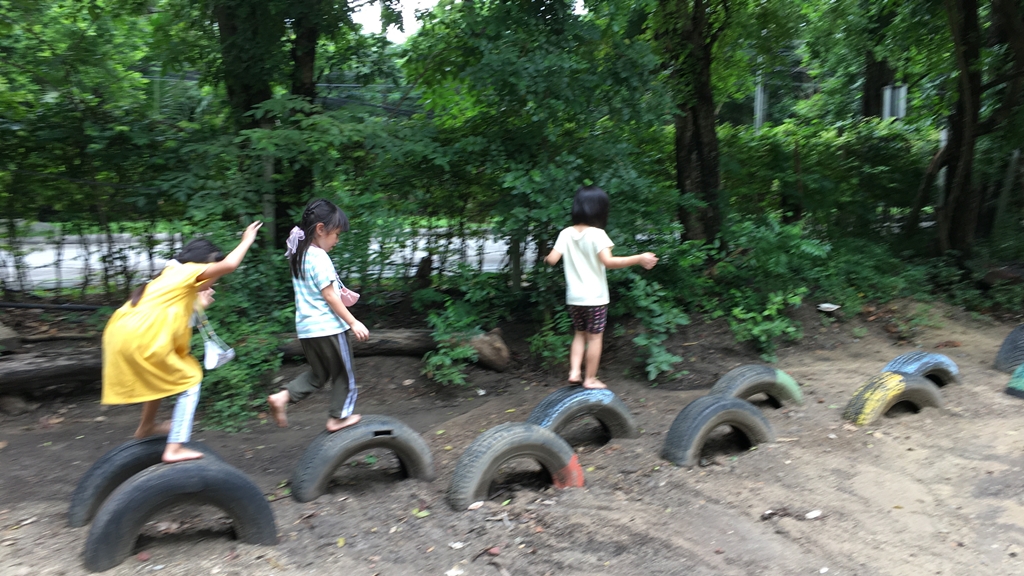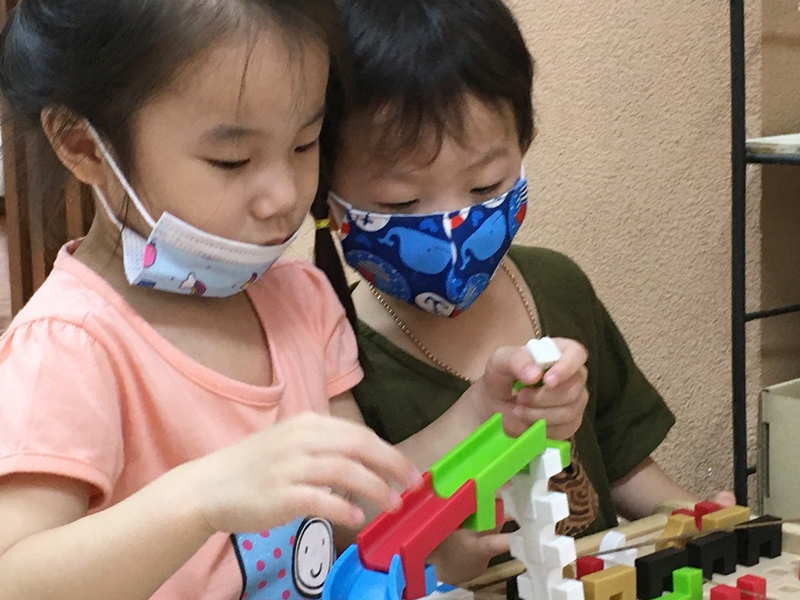
Learning by Living: The Rhythms and Routines of a Kindergarten Day
Learning by Observing and by Being Together in Community
The KG-1, students (ages 3-4) often begin by playing with children their own age or playing alone, observing their older peers until they feel ready to interact, step by step.
According to Cru Air, in KG1, students talk about their desires, speaking only about their own needs first. In KG2 (ages 4-5), they start to link their language to their friends’ activities, little by little, not just talking about themselves. Then, by KG3, their language (both English and Thai) becomes “more fancy,” with new words or different verbs, as they use their newly developing language to problem-solve and express themselves more clearly.
So when they live together, the KG1 starts to see the different level of language from KG2 and KG3, so they get used to that kind of language. They will not just think of the ego-level if they are hearing other students using other levels of language. If only KG1 stays together without the older students, they miss the opportunity to learn from older peers. Cru Air and Teacher Gift explain that in the past, the school used to have classes with all the same age of students, without mixed ages. Then for example, when a young student wanted to get a toy but didn’t know how to say what they wanted, they might just grab it away from another child, and there might be some fighting among friends because they didn’t know how to use language. Now, things are different.

the older students build something new.
With the benefits of mixed-age classrooms, the KG teachers and older peers can guide the younger students more easily to use language in the context of getting along together, living together, playing with the same toys. By grouping KG2 and KG3 together with KG1, the younger students learn to copy from and observe the older ones. They might ask, “Can I have this?” instead of taking it, or sometimes the KG2 and KG3 will teach them: “Say this if you want this.” The older ones help the younger ones in both Thai and English. The younger ones are not only observing the language, but also how the older students think, play, and socialize — it’s all linked together with language learning at the same time.
The teacher, through knowing the students and careful observations, helps to guide students in learning the words and phrases for living together and learning with others.
Teacher Fern gives examples of how the older students learn to empathize with the younger ones, and understand why they can do some things that the younger students cannot do yet. They remember when they were younger too. For example, the KG3 students do Muay Thai (traditional Thai boxing and outdoor activities that require more advanced self awareness) along with more advanced clean-up and literacy activities as well.
Younger students often play contentedly alone, noticing the songs of transition (sung by teachers and older peers) that perpetuate them forward to whatever comes next. Early in the term, one small 3-year old prefers a solitary mode of play also, though each week she plays a little more with a friend who goes at her pace. Others drift in and out of playing with their older and younger kindergarten playmates. By the time students reach KG2 or KG3, their choices of free time play become more social and interactive.
The younger ones watch their older peers who move quickly while running outside, or concentrate more carefully on tasks that require being slow and methodical, like building tall towers. Fast, then slow, slow then fast, whatever happens next, a little change with consistency is essential to the KG students’ learning processes.

